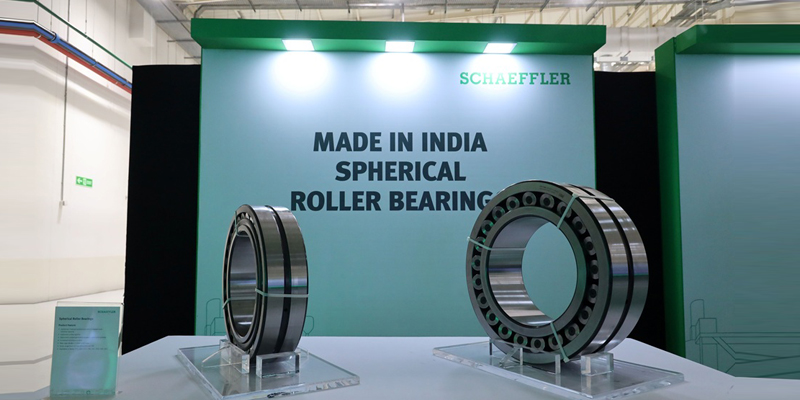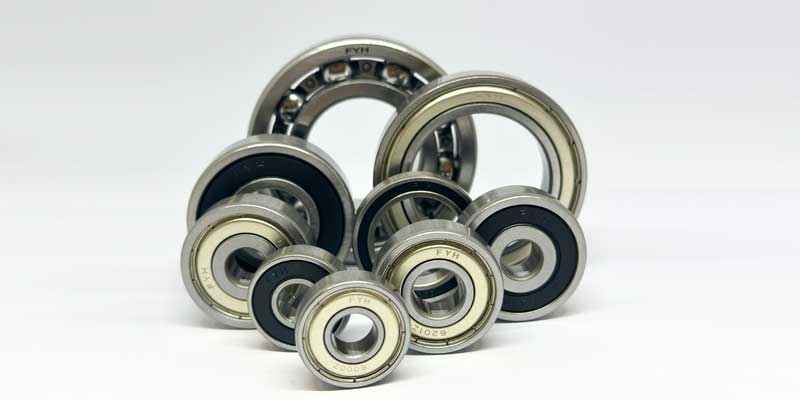Schedule a Call Back
A closer look: Use of high quality and durable bearings
 Articles
Articles- Feb 28,23

The biggest of machines, it is said, revolves on the smallest of bearings - and with good reason. Bearings reduce friction in moving mechanical parts without compromising on the required lateral or circular movement while also minimising wear and tear, maintenance-related costs, and system downtime. This core functionality has seen bearing being used in a wide range of applications, including those in the automotive, building, solar, HAVC, industrial and many more fields.
Bearings provide a stable platform for machinery, allowing it to function efficiently. But not all bearings are the same. The type of bearing needed depends on the bearing's function and the amount of pressure it will endure. The four main types of bearings are ball bearings, roller bearings, needle bearings and plain (or sleeve) bearings. As a result, each of the listed range of bearings has distinguishing characteristics that make them unique.
Little wonder, then, that the global market for bearings is growing robustly. Estimated to be worth around $107 billion in 2021, the sector is expected to grow at a CAGR of more than 9 per cent until the end of this decade. And this growth is also driving significant innovation.
The rise of bearing technology
In the roughly 6,000 years of its history, bearing technology has advanced significantly, from straightforward wheel bearings to the most recent modular sliding bearing technology. Even though the round object was a historical first in and of itself, it needed a way to be attached to a cart in order to act as a practical transportation method. In order to transport large items and convert the wheel into the indispensable technology it is today, the plain bearing was developed after the wheel. A plain bearing must, at the very least, complete the following tasks:
All these requirements are met by the plain bearing design, although not effectively. The technology has remained remarkably true to the original design despite being thousands of years old. Modern bearings must do the same tasks as the very first bearings, but the materials have changed to achieve the objectives more effectively. Two major issues with traditional plain bearing designs are—the amount of wear and the amount of friction.
Although these two problems were reduced by the introduction of lubricants, bearings remained high-wear components that required regular replacement. Over the course of history, inventions improved the wear-resistant and low-friction features of these key components.
Engineer to engineer
Product development is becoming increasingly important as markets evolve as a result of new technology and changing customer needs. To keep items relevant and in demand, there is a constant need to redesign, innovate and change with the market. For instance, electric vehicles are starting to appear on the automotive market, and their preferred placement for the battery is on the underside of the vehicle, which makes it possible to do away with the differential tunnel. This creates new configuration options for both a vehicle's exterior and inside, whether they are light commercial or passenger vehicles.
Industry experts like Saint-Gobain, a global bearings supplier for automotive interior applications, steering, and hinges for over 40 years, help to cater to the rising demand with innovative designs. It provides innovative bearings that offer the ability to control torque with the use of a thick compound layer or spring features. Bearing material that are made of non-conductive or conductive materials are available.
Corrosion resistant bearings
Rust, particularly red rust, is a sign of poor quality. There is a significant need for long-lasting, high-quality bearings that are corrosion resistant. While eliminating red rust should be the main focus, white rust should also be minimised whenever possible to increase resilience and, as a result, the bearing's lifespan. Corrosion can have many different types and causes, including galvanic or contact corrosion, movement, and environmental exposure, to name a few.
By choosing bearing metals that are relatively close to those in the assembly on a scale of reactivity (assessed using the galvanic series), can significantly reduce the problem of galvanic corrosion. Components are designed to work together, or more accurately component materials need to work together, to prevent galvanic corrosion. There might be prevention of any unpleasant surprises during the operating lifespan of the part or system by undertaking a variety of corrosive environment-controlled tests. We may conduct cycle condensate tests, customer-specific testing, and salt spray tests in addition to other typical tests.
The rising importance of quality in bearings
Compressive and fatigue strength
The maximum pressure that is applied to the bearing is greater than the typical pressure. In order to endure this maximum pressure, the bearing material must have a high compressive strength. To avoid fatigue failure, the bearing material must have high enough endurance strength because in some applications the bearings are also subjected to severe variable loads.
Corrosion protection
The individual bearings corrosion resistance is not necessarily identical to the life expectancy of the whole assembly. The environmental conditions, in addition to the bearing material (the metal, sliding layer and anti-corrosive coating), should also be considered. The corrosion resistance of a system should always be verified in the assembled condition.
The creation of a corrosion-resistant specification that would protect both the bearing and the hinge assembly that surrounds it has been one of the top development priorities. Another function of this material, which is essential for door hinges, is setting and maintaining the required degree of torque. In other words, inadequate torque can lead to free play, which can result in rattling, doors that tilt or drop, and other issues. Excessive torque can have a detrimental effect on the amount of effort required by the end user to open or close the door.
The versatility of bearings
Since they were initially utilised in the late 18th century, bearings have revolutionised a number of industries. Additionally, a variety of bearing materials and designs are now easily accessible to meet the requirements of various application situations thanks to the growth and development of technology. In many different types of machinery, bearings and tolerance rings are very helpful for reducing friction and wear and increasing operational efficiency. They are uncomplicated, dependable, and highly effective.
About the author
Ritesh Patterson is a dynamic professional with a proven track record of accomplishing deliverables on sales, profitability, launch strategies and organisational development. With a professional career spans close to 30 years as a Business Head, Sales and marketing professional with diverse experience into Industrial and retail market segments across geographies domestic and overseas currently he is General Manager at Performance Plastics and ADFORS, Saint-Gobain India.
Related Stories

Schaeffler expands industrial bearings range for heavy industries
Additionally, the company has introduced large Cast Steel Housings, Adapter Sleeves, Withdrawal Sleeves, and Hydraulic Sleeves, enabling OEMs and consultants to access a complete system from a singl..
Read more
Sembcorp to invest Rs 362.38 billion in green ammonia plant in Thoothukudi
Earlier this year, Sembcorp signed a Memorandum of Understanding with the Government of Tamil Nadu during the Global Investment Meet.
Read more
FYH Japan introduces all-new range of deep groove ball bearings
Since 1950 FYH - the largest manufacturer of mounted bearing units in Japan - has prioritised quality, aiming to offer efficient, precise, and affordable solutions to a diverse array of industries.
Read moreRelated Products

Auto Wheel Hub Bearings
Kasuma Auto Engg Pvt Ltd offers a comprehensive range of Auto Wheel Hub Bearings.

Gear Lever Kits
B S Industry offers a wide range of gear lever kits.

Automotive Gear
Matrix Precision Engineering offering a personalized array of automotive gear.














